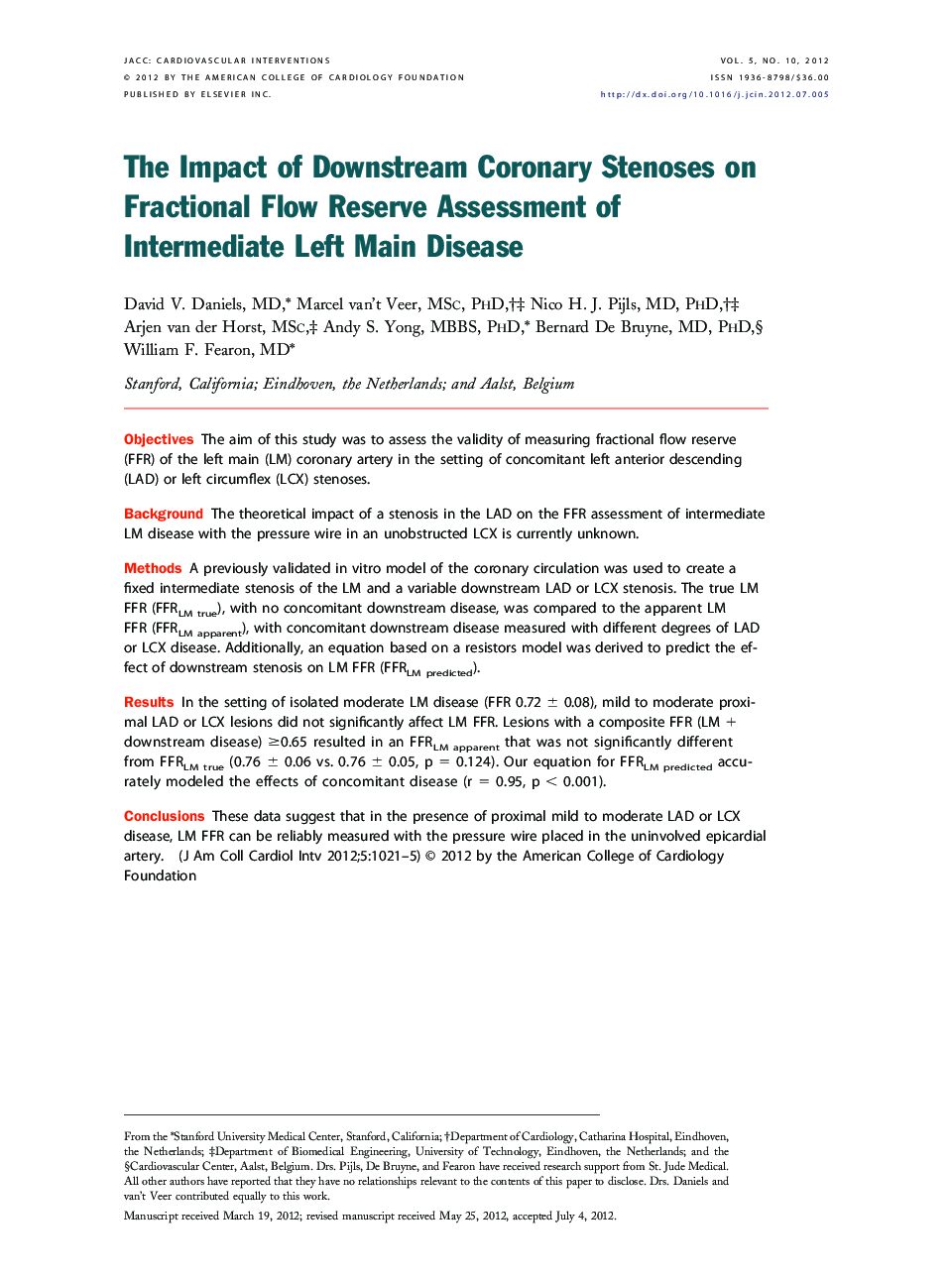| کد مقاله | کد نشریه | سال انتشار | مقاله انگلیسی | نسخه تمام متن |
|---|---|---|---|---|
| 2940721 | 1177040 | 2012 | 5 صفحه PDF | دانلود رایگان |

ObjectivesThe aim of this study was to assess the validity of measuring fractional flow reserve (FFR) of the left main (LM) coronary artery in the setting of concomitant left anterior descending (LAD) or left circumflex (LCX) stenoses.BackgroundThe theoretical impact of a stenosis in the LAD on the FFR assessment of intermediate LM disease with the pressure wire in an unobstructed LCX is currently unknown.MethodsA previously validated in vitro model of the coronary circulation was used to create a fixed intermediate stenosis of the LM and a variable downstream LAD or LCX stenosis. The true LM FFR (FFRLM true), with no concomitant downstream disease, was compared to the apparent LM FFR (FFRLM apparent), with concomitant downstream disease measured with different degrees of LAD or LCX disease. Additionally, an equation based on a resistors model was derived to predict the effect of downstream stenosis on LM FFR (FFRLM predicted).ResultsIn the setting of isolated moderate LM disease (FFR 0.72 ± 0.08), mild to moderate proximal LAD or LCX lesions did not significantly affect LM FFR. Lesions with a composite FFR (LM + downstream disease) ≥0.65 resulted in an FFRLM apparent that was not significantly different from FFRLM true (0.76 ± 0.06 vs. 0.76 ± 0.05, p = 0.124). Our equation for FFRLM predicted accurately modeled the effects of concomitant disease (r = 0.95, p < 0.001).ConclusionsThese data suggest that in the presence of proximal mild to moderate LAD or LCX disease, LM FFR can be reliably measured with the pressure wire placed in the uninvolved epicardial artery.
Journal: JACC: Cardiovascular Interventions - Volume 5, Issue 10, October 2012, Pages 1021–1025